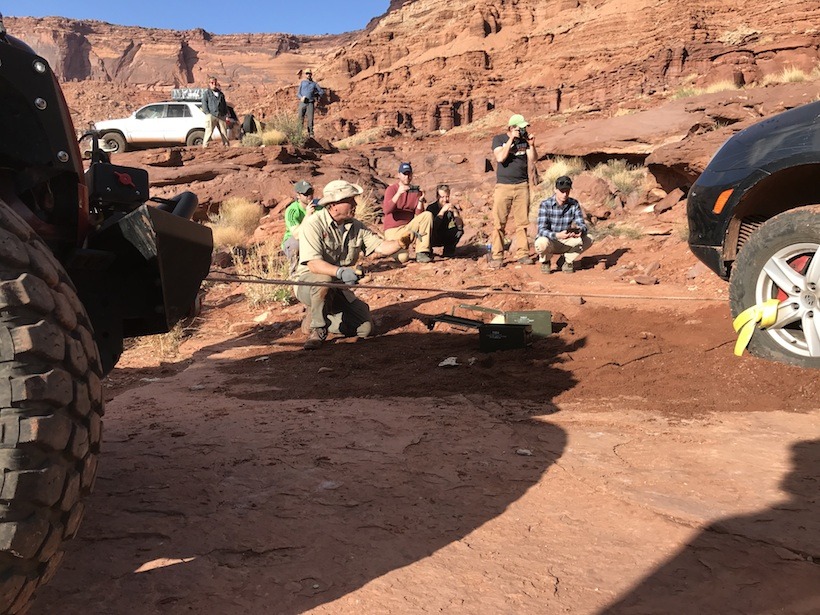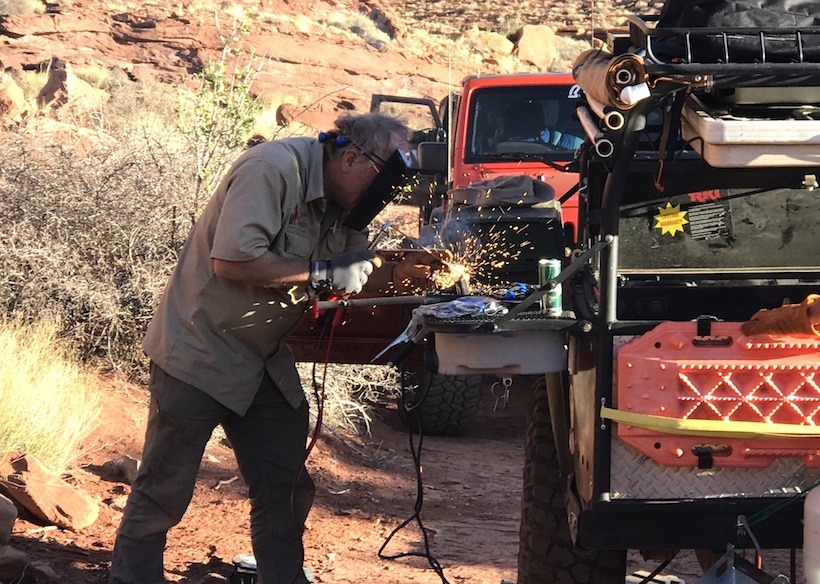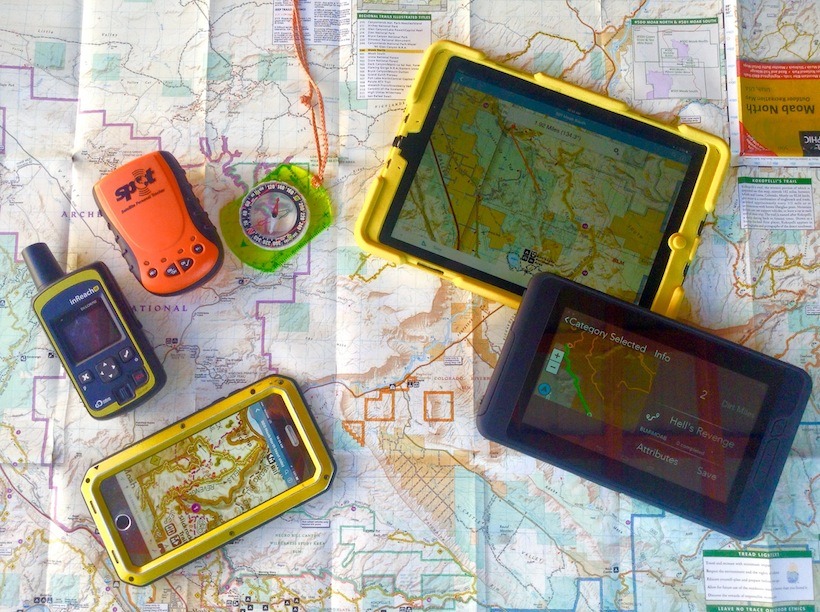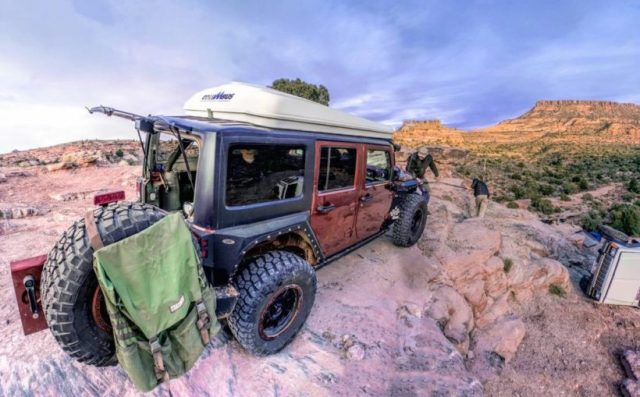As a professional off-road driving instructor and 15 year member of Moab’s Search & Rescue, I have seen a lot. The back country can be very unforgiving. Most of the back country mishaps are a direct result of the decisions that took place just moments before the unfortunate happened. It is not the typical “hold my beer and watch this” that gets people into trouble, but more often it is when they simply let their guard down. (brain to off position) As we trek farther from the perceived safety of pavement and its link to endless resources, we need to shift our off-road decision making mentality. In other words, the further out we get, the more conservatively and smarter we need to drive. This is where teamwork, training, research and effective communication will help to take you farther, safer.


Recently, I was contracted by the United States Army Special Forces division to create an off-road expedition training program. Their commander requested I incorporate several emergency medical and vehicle recovery scenarios into the training. I was fully prepared for these scenarios, but could not have predicted the real life emergencies we would stumble upon during our exercises. Day one: 22 miles into the desert with a temperature of 113°. As I looked to the west, I saw a lone female subject walking over scorched earth in our direction. I approached her and asked if she needed help. Nearly in tears, she said, “Yes, my husband has driven off of a ledge and our vehicle is going to slide off into a canyon.”. Her plan had been to walk the 22 miles back to civilization to get some help. She then asked if we could possibly help her. I looked over my shoulder at the United States Army Special Forces Division and replied, “Why yes ma’am, I think we can help you.”. Once we arrived at the scene, I was able to quickly assign roles and facilitate a winching rescue for the vehicle. We were also able to patch up the bumps, bruises and scrapes that her husband had received during the accident. We then turned them around and sent them back toward civilization.
Just a few more miles up the road, we came across a giant boulder that had fallen from the ledges above and was now blocking our path. Once again, tasks were assigned and a plan was created to move the obstacle out of our path. Using a whiteboard, we detailed a mechanical advantage system to help illustrate the plan and it’s objective. Once everything was ready and inspected, we reviewed exactly what everyone’s role was. This helped assure a total overall level of safety. Keep in mind, when winching a boulder off of a ledge, your rigging must release, otherwise when the boulder starts heading down, it can take your vehicle with it to the bottom. This could be bad. Later that night, the Army Commander pulled me aside and complimented me on the realism of scenarios that I had put into place for the benefit of their training. I just smiled and said, “Why thank you sir.”. I can only assume he thought I had staged each of these situations.

I am always amazed at the number of people in need that I run into while teaching my off-road training classes. It’s almost as if these people went out ahead of time and got themselves into a mess in order to make our classes more interesting. Just a few week ago, I was leading a three-day training expedition and a participant asked me about back country vehicle repairs and what I carry with me for these. I then rattled off a list of spare parts and tools I typically carry including the required supplies to create a makeshift welder. Oddly enough, within an hour we came across a Porsche Cayenne with a broken tie rod. The timing was perfect and we had a welding 101 class out on the trail.

The stories seem endless and with each is an opportunity to teach, hone and refine our skill set. I once came across a group of Russian tourists that had driven their Jeep into a deep water crossing and had no knowledge or way to recover it. One time I pulled a Toyota Yaris rental car 68 miles out of the desert canyon on a very tight UTV trail. The driver told me he had taken the UTV trail because he thought it was a shortcut to the interstate. Deep in Canyonlands National Park, I once found a mother and her three young daughters that had been stranded and out of water for three days after burying their jeep up to the frame in a deep sand wash. After several hours of digging in the hot sun, it was time to try to recover their vehicle. It was then that, I discovered that they had never put the Jeep into four-wheel-drive. When I asked the mother about this oversight, her response was: “We don’t know anything about that stuff because we are from California.”. (My apologies go out to everyone from California!) I’m not quite sure what that meant, but because of this simple mistake, they nearly became another statistic. In the dark of night, I once came across a pick up truck that was teeter tottering with the front two wheels off of a cliff. The driver was too afraid to move, so he had been sitting motionless for nearly 39 hours. On another occasion, I found a gentleman that had driven through a stream that became a raging river after a rainstorm. He had been stranded for two full days eating only a pack of cigarettes that his ex-wife had left in the glove compartment. Yummy.

So many of these unfortunate tales could have been avoided with better planning and preparation. There is never a substitute for having a good plan. Always know where you’re going and have multiple backups in place for whatever may go wrong. If you carry a GPS or digital mapping system, you should also carry paper maps and a compass. I typically carry multiple mapping systems plus paper maps because batteries die and things get wet. I can always rely on good old fashion map reading. This skill is one that seems to be disappearing from people’s skill-sets. Additionally, many of the above listed mishaps could have been minimized by simply being able to communicate with the outside world. With so many new devices on the market such as the SPOT satellite messaging device or the DeLorme InReach, there is no reason to have to be stranded alone for a prolonged period of time when in trouble in the back country. As an Off-road trainer, I choose to carry both systems so I can teach the pros and cons of each. Unfortunately, even with the best of plans and the latest gear, mistakes will happen and vehicles will break.
When traveling off the grid you are bound to stumble upon bad situations, people in need of help or find yourself in your own off-roading nightmare. The question is this: are you prepared for things that could go wrong? Do you have the training and knowledge to assure that you do not become another statistic? Before venturing out, obtain Off-road driving and recovery training from a certified trainer. Practice your skills. Get to know your rescue equipment before you need it. Here at Coyote Adventure Safari we specialize in multi-day overland expedition training that helps prepare adventurists for the big picture. We cover everything from navigation skills and recovery techniques to back country cooking and so much more. Our next three-day training session is June 9-11. You can read more about these trips on our Coyote Adventure Safari Facebook page.
Additional trainers in your area can be located by visiting the International 4 Wheel Drive Trainers Association (I4WDTA) at www.i4wdta.org
Author: John Marshall, Owner of Coyote Adventure Safari.
CoyoteAdventureSafari@gmail.com
435-260-6056
















Major kudos for saving those lives. Preparation and training is key to survivability in an off-road recovery situation. Just a few weeks ago my wife and I had to do a recovery on a Subaru towing a weighed down U-Haul trailer off of NF-4828 near Easton, WA that had become high centered on a snow drift. The driver was not prepared for winter conditions at all, wearing shorts, a t-shirt and sneakers. Plus, his elderly grandmother was with him. They were trying to take a short cut around the traffic jam on I-90. It was lucky for them that we stumbled across them as the temperatures were dropping with the on-coming evening and the melting snow from the daytime was beginning to freeze over.